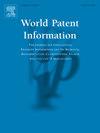Innovation trends and evolutionary paths of electrocatalytic hydrogen evolution reaction technology: A global patent analysis
IF 1.9
Q2 INFORMATION SCIENCE & LIBRARY SCIENCE
引用次数: 0
Abstract
Electrocatalytic hydrogen evolution reaction has emerged as a key driver of technological innovation and industrial advancement in the hydrogen energy sector. By conducting statistical analysis on patent information in this technology field, we can effectively grasp the trends and directions of technological research and development (R&D), thereby providing a critical basis for scientific policy making and industrial deployment strategies in related fields. Based on search results from the IncoPat database, this study integrates text mining with KeyBERT algorithm, CiteSpace visualization analytics, and Logistic model to conduct a comprehensive investigation from multiple dimensions including patent quantity and quality, R&D hotspots and frontiers, as well as technology lifecycle. The results indicate that: (1) The patented technologies in this field predominantly originate from core innovation clusters in China, Japan, the United States, and South Korea. China maintains an unequivocal dominance in the volume of technological outputs and has made effective strides in catching up with developed countries in terms of patent quality. However, the industrial application of Chinese patents may encounter certain difficulties. In contrast, the technological innovations of the United States and Japan maintain comparative advantages in terms of global influence and market presence. (2) The R&D hotspots in this field are concentrated primarily on topics such as precious metal-based catalysts and transition metal-based catalysts. (3) The evolutionary trajectory of this technology can be delineated into three distinct phases, with each phase featuring distinct R&D focuses and mainstream paths. (4) The technology is currently in a rapid growth phase, with forecasts suggesting it will enter the technological maturity stage by 2026 and the decline stage by 2036.
电催化析氢反应技术的创新趋势与演进路径:全球专利分析
电催化析氢反应已成为氢能源领域技术创新和产业进步的关键驱动力。通过对该技术领域的专利信息进行统计分析,可以有效掌握技术研发的趋势和方向,从而为相关领域的科学政策制定和产业部署战略提供重要依据。本研究以IncoPat数据库的检索结果为基础,将文本挖掘与KeyBERT算法、CiteSpace可视化分析、Logistic模型相结合,从专利数量与质量、研发热点与前沿、技术生命周期等多个维度进行综合调查。结果表明:(1)该领域的专利技术主要来源于中国、日本、美国和韩国的核心创新集群。中国在技术产出量方面保持着无可置疑的优势,在专利质量方面取得了有效进展,正在追赶发达国家。然而,中国专利的产业化应用可能会遇到一定的困难。相比之下,美国和日本的技术创新在全球影响力和市场占有率方面保持着比较优势。(2)该领域的研发热点主要集中在贵金属基催化剂和过渡金属基催化剂等课题上。(3)该技术的演进轨迹可以划分为三个不同的阶段,每个阶段都有不同的研发重点和主流路径。(4)该技术目前处于快速成长阶段,预测到2026年将进入技术成熟期,到2036年将进入衰退期。
本文章由计算机程序翻译,如有差异,请以英文原文为准。
求助全文
约1分钟内获得全文
求助全文
来源期刊

World Patent Information
INFORMATION SCIENCE & LIBRARY SCIENCE-
CiteScore
3.50
自引率
18.50%
发文量
40
期刊介绍:
The aim of World Patent Information is to provide a worldwide forum for the exchange of information between people working professionally in the field of Industrial Property information and documentation and to promote the widest possible use of the associated literature. Regular features include: papers concerned with all aspects of Industrial Property information and documentation; new regulations pertinent to Industrial Property information and documentation; short reports on relevant meetings and conferences; bibliographies, together with book and literature reviews.
 求助内容:
求助内容: 应助结果提醒方式:
应助结果提醒方式:


